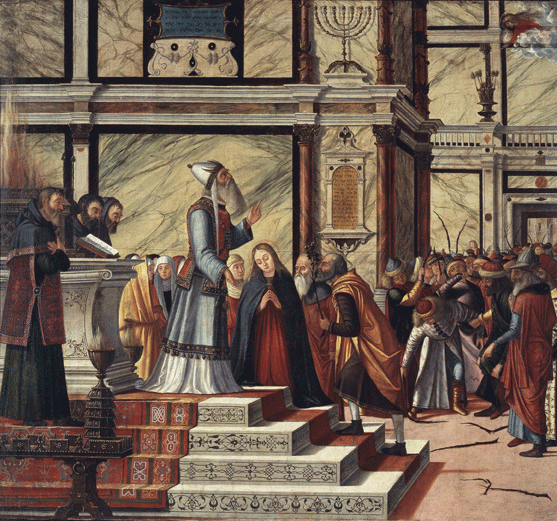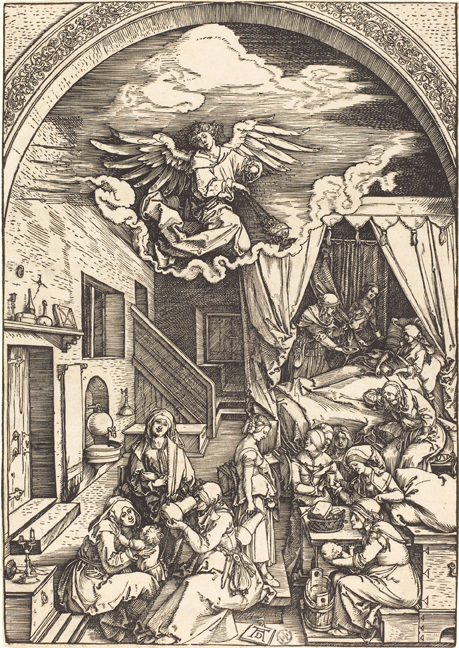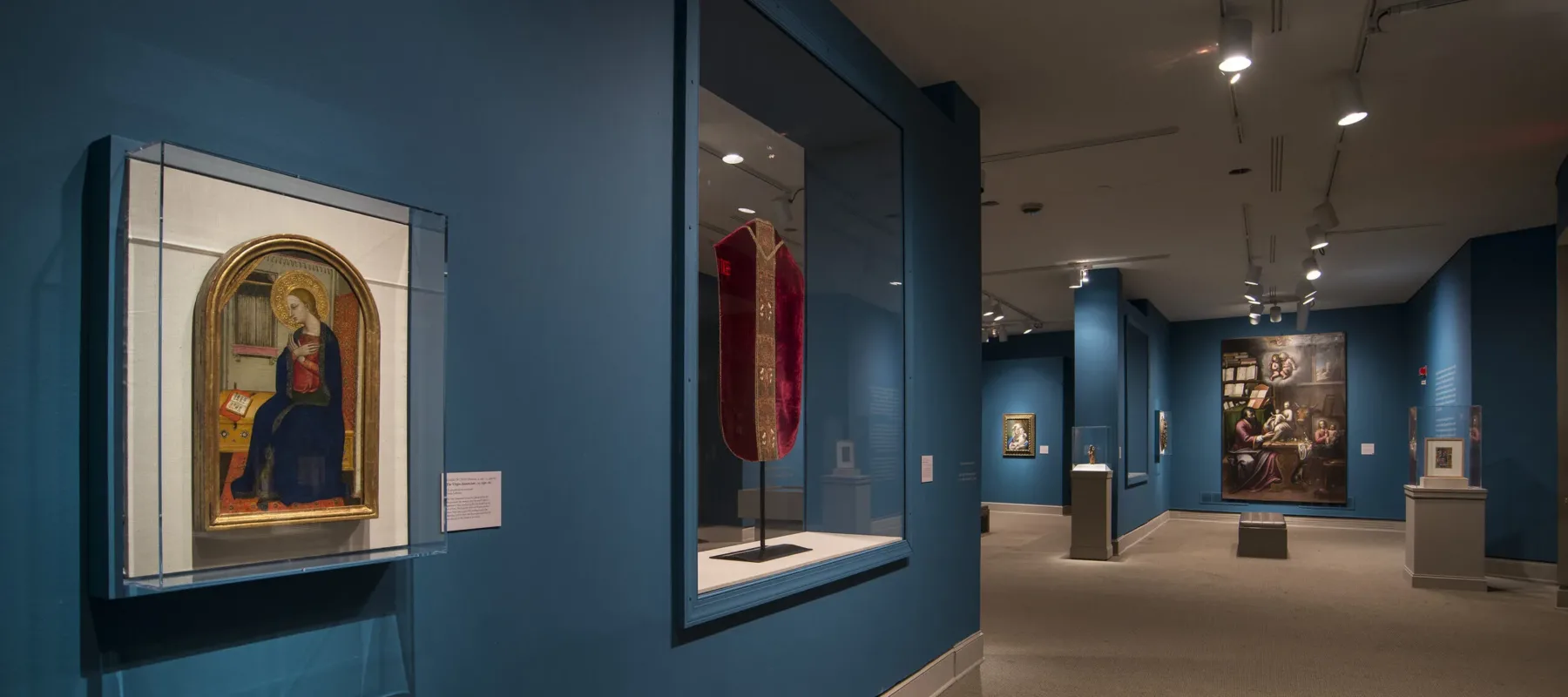For being the mother of Christ, Mary is a surprisingly scarce figure in the Bible. The primary canonical source for information about Mary is the New Testament, yet the basic biographical sketches created by the four Evangelists lack detail about her life before Christ.¹ Despite the scarcity of written accounts documenting Mary’s past, her life story is a prevalent theme throughout both art history and Picturing Mary: Woman, Mother, Idea, artists and the public sought more information than could be found in the Bible.
Many artists drew their information from apocryphal texts, ancient sources that were not recognized by the church or included in the Bible, in depicting specific events in Mary’s life. Most likely written sometime during the 2nd century C.E., New Testament Apocrypha contain rare information about both Mary’s life and Christ’s childhood, and provide vivid accounts of the teachings of Christ and his apostles. Apocrypha such as the Infancy Gospels were extremely popular in the following centuries. They were also the dominant source for pictorial depictions of Mary during the late Middle Ages and continued to be widely used as artistic inspiration after the Renaissance.

Vittore Carpaccio’s Marriage of the Virgin, also called Miracle of the Flowering Staff (1502–05), illustrates the story of Joseph and Mary’s marriage as written in the apocryphal Protevangelium (or Protogospel) of James. Using vivid naturalism and high levels of detail, Carpaccio portrays the miracle of Joseph’s staff blossoming with flowers upon his betrothal to Mary. The supernatural element of Joseph’s staff blooming reveals the role of God in bringing Mary and Joseph together.
By detailing the holy selection of Joseph as Mary’s husband, the Protevangelium of James provides greater insight into the life of Mary and enhances Joseph’s role in religious writings. Carpaccio’s choice of subject indicates the contemporary popularity of apocryphal work and suggests society’s desire to know more about the life of Mary than the Bible provides.

The six Dürer prints (ca. 1502–10) featured in Picturing Mary capture key moments in Mary’s life as detailed in a number apocryphal texts, including the Protevangelium of James and the Pseudo-gospel of Matthew. The Birth of the Virgin (1503–04) combines the reality of a bustling birthing room with the dreamlike image of an angel floating overhead. By dressing the figures in 16th-century fashion, Dürer visualizes the apocryphal phrase “Anna conceived and gave birth to a daughter and, as commanded by the angel, the parents named her Mary,” as occurring in his native Germany.² By doing so, he directly links the narrative of the Virgin to the people of Nuremberg.
In the 21 images in his Marian series, Dürer uses apocryphal inspiration and similar stylistic elements to flesh out Mary’s life story. In doing so, he and countless other artists help viewers better understand and identify with the Virgin.
Notes:
1. Zlotnik, Ann. “Mary and Apocryphal Writings,” International Marian Research Institute, http://campus.udayton.edu/mary/maryapocryphal.html.
2. Elliott, J. K. A Synopsis of the Apocryphal Nativity and Infancy Narratives. Leiden: Brill, 2006. eBook Academic Collection (EBSCOhost), EBSCOhost (accessed March 30, 2015).
Last chance! Visit Picturing Mary, on view through April 12 at the National Museum of Women in the Arts.
